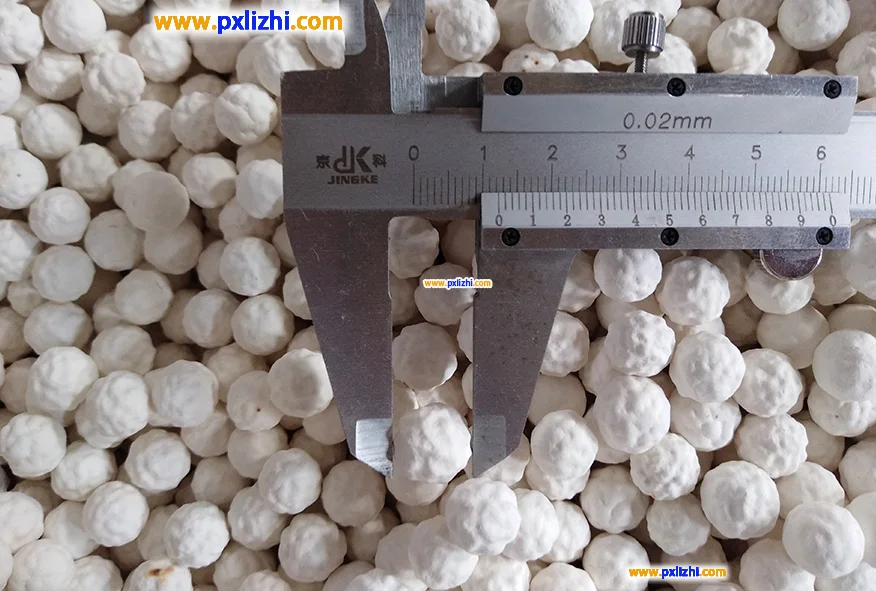What is the composition of ceramic ball?
The composition of ceramic balls varies significantly depending on their types and applications. They can mainly be classified into three categories: oxide ceramic balls, non-oxide ceramic balls, and composite ceramic balls. Each category has its own characteristics in terms of composition

1. Oxide ceramic balls
With metal oxides as the main component, it has excellent wear resistance, insulation and chemical stability, and is the most common type of ceramic ball.
Alumina ceramic balls (Al₂O₃
The main component is aluminium oxide. According to purity, it can be classified as
Low purity (below 75%) : It contains a small amount of silicon dioxide (SiO₂), magnesium oxide (MgO), etc. as sintering AIDS, with a relatively low cost, and is used in general wear-resistant scenarios.
High purity (over 90%) : With a high content of alumina, few impurities, excellent hardness and wear resistance, it is often used in high-end fields such as precision grinding and bearings.
Zirconia ceramic balls (ZrO₂
The main component is zirconia, and stabilizers such as yttrium oxide (Y₂O₃) and cerium oxide (CeO₂) are usually added to form a stable cubic or tetravalent phase structure. It features high strength, high toughness and corrosion resistance, making it suitable for high-speed bearings, medical equipment and other scenarios.
Silicon oxide ceramic balls (SiO₂
With silicon dioxide as the main component (such as fused quartz balls), it can withstand high temperatures and has good insulation properties, and is often used for insulation or supporting components in high-temperature environments.

Ii. Non-oxide Ceramic balls
With non-oxide compounds as the main component, it has more special properties and is suitable for extreme environments.
Silicon nitride ceramic balls (Si₃N₄)
The main component is silicon nitride, which features extremely high strength, thermal shock resistance and oxidation resistance. It can be used in high-temperature (above 1000℃) and corrosive environments and is commonly applied in aerospace, gas turbine and other fields.
Silicon carbide ceramic balls (SiC
The main component is silicon carbide, with a hardness second only to diamond. It has excellent wear resistance and thermal conductivity, making it suitable for grinding high-hardness materials (such as glass and semiconductors) or high-temperature mechanical parts.
Iii. Composite Ceramic Balls
Composed of multiple ceramic components, it combines the advantages of different materials to meet specific performance requirements.
For example: Alumina-zirconia composite balls, which take into account the low cost of alumina and the high toughness of zirconia. Silicon carbie-silicon nitride composite balls enhance stability and wear resistance at high temperatures.
Summary
The core components of ceramic balls are determined by their functional requirements: if wear resistance is pursued, alumina and silicon carbide can be selected. If high strength and high-temperature resistance are required, silicon nitride and zirconia should be chosen. Special scenarios can optimize performance through compound components. A small amount of sintering AIDS (such as magnesium oxide and yttrium oxide) will also be added during production to lower the sintering temperature and increase the density.

What are the main chemical components of inert ceramic balls? What roles do they respectively play?
The main chemical component of inert ceramic balls is high-purity aluminum oxide (Al₂O₃), often containing small amounts of auxiliary components such as silicon dioxide (SiO₂), magnesium oxide (MgO), and zirconia (ZrO₂). Among them, high-purity alumina is the core to ensure its chemical stability and high-temperature resistance, preventing it from reacting in corrosive environments such as acids and alkalis and playing an inert supporting role. Meanwhile, a small amount of auxiliary components can optimize its sintering performance, enhance mechanical strength and wear resistance, and ensure that it is used for filling, supporting catalysts or as an internal component of the tower. It can stably separate materials, distribute fluids and protect catalysts from impact damage.

